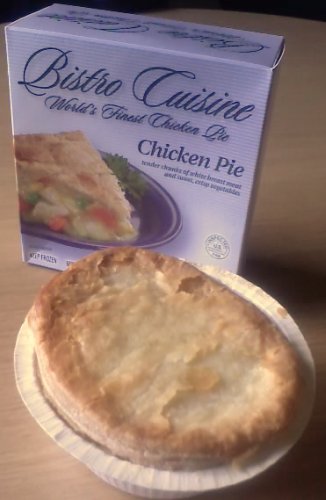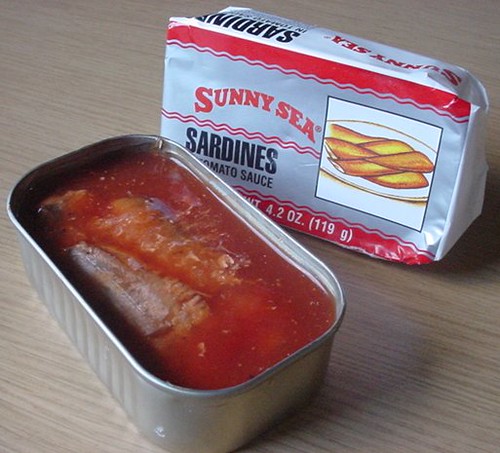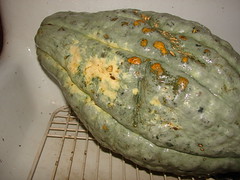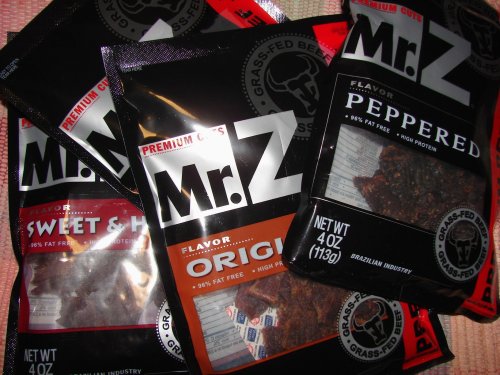 I love pot pies. When I was a kid, it was always a treat when there were pot pies for supper, especially if they were the cheap-ass Banquet Pot Pies that we could get for something like 15c each.
I love pot pies. When I was a kid, it was always a treat when there were pot pies for supper, especially if they were the cheap-ass Banquet Pot Pies that we could get for something like 15c each.Truth is, those cheap-ass Banquet pies are still my favorite, but every now and then I try other brands as well. Lately, our local Shaw's had a freezer full of these Bistro Cuisine Chicken Pies on sale as a "manager's special," so I brought a bunch home.
Preparation was a snap: The pie went into the microwave for four minutes, and I allowed it to stand for another three minutes as the instructions stated. (Although pot pies have adapted well to microwave "cooking," and it certainly is convenient, I sometimes get a little nostalgic for the little aluminum tins they used to come in. The kitchen always smelled so good when there was a tray of little pot pies baking in the oven. It's just not the same with the microwave.)
The top crust is a circle of puff pastry which comes out of the microwave flaky and tender. There are lots of large, meaty chunks of white-meat chicken, accented with veggies (peas, corn, and carrots) without allowing the vegetables to predominate. The gravy, while deliciously flavorful (made with chicken broth and finely minced celery, onion, and carrots) is a little on the thick side to my taste - and yet, it is never gluey or unpleasant; I just happen to prefer my gravy a little runnier. Bistro Cuisine has done a really good job here - the Nutrition Facts on the box shows good, honest ingredients without a bunch of additives or preservatives. It made for a satisfying lunch that tasted a lot closer to homemade than the average frozen pot pie.
Bistro Cuisine Chicken Pies are made by Budd Foods in Manchester, NH. Click here to visit their website.




